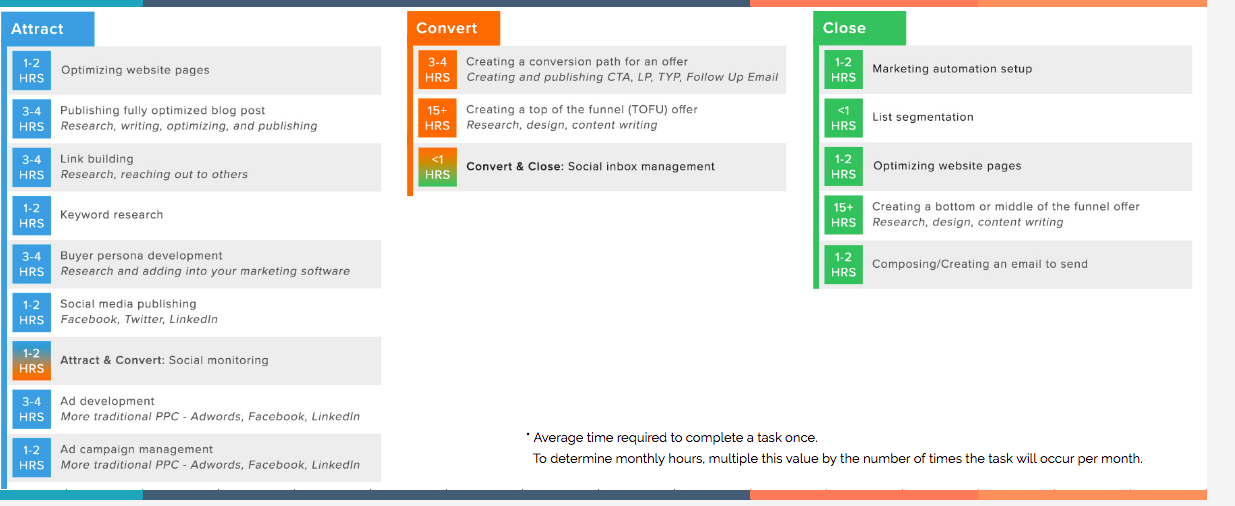HubSpot users that have the most success identify their long-term marketing goals using the SMART goal framework.
A SMART goal stands for:
- Specific - Your goal should be unambiguous and communicate what is expected, why it is important, who's involved, where it is going to happen and which constraints are in place
- Measurable - Your goal should have concrete criteria for measuring progress and reaching the goal
- Attainable - Your goal should be realistic and possible for your team to reach
- Relevant - Your goal should matter to your business and address a core initiative
- Timely - You should have an expected date that you will reach the goal.
Typically, marketers might have goals for Visits, Contacts, and Customers for the year, quarter, or month and the numbers are closely related to each other. We've found that focusing on one of these specific segments gives the clearest vision of success.
- Visits - You should focus on visits if you are just getting started with your website, or if you already have good conversion rates for visits to leads and leads to customer, but need additional traffic to add some fuel to the fire
- Contacts - You'll want to focus on Contacts if you are satisfied with the amount of traffic to your content, but you are not getting enough leads for sales. This is the segment that most HubSpot users focus on
- Customers - Focus on this If you are getting a healthy amount of traffic to your content, visitors are converting on forms, but the leads just aren't ready to close into customers
You may be asking yourself, "how do I determine a Visits, Contacts, or Customer Goal?" We recommend examining your current situation.
- What have you been focusing on in the past? Is it Visits, Contacts, or Customers?
- What are you currently spending the most of your time on? Is it Visits, Contacts, or Customers?
- How much time do you have per week? A few days or a few hours?
- Who else is helping you? Are you the only one using HubSpot or do you have colleagues?
For more information on setting and reaching an obtainable goal, check out this blog post before you move forward.


